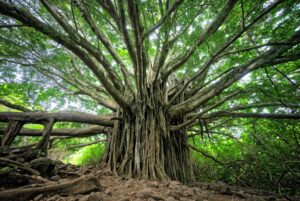In the ever-evolving field of arboriculture, technological advancements have significantly reshaped the way professionals assess and manage tree risks. While traditional methods have proven effective, they are now significantly bolstered and enriched by state-of-the-art technologies, delivering results that are not only more accurate and efficient but also more comprehensive in their scope. This article delves into the various technologies revolutionizing tree risk assessment, highlighting their benefits and impact on the arboricultural landscape.

Drones: Aerial Insights for Comprehensive Assessments
One of the most revolutionary technologies in tree risk assessment is the use of drones. Armed with high-resolution cameras and advanced sensors, drones empower arborists with a panoramic perspective of trees, allowing them to discern potential risks and defects that may elude detection from ground-level observations. This aerial perspective is particularly valuable for assessing the overall health, structure, and stability of trees in challenging or large-scale environments.
Drones also enhance the safety aspect of tree risk assessment by eliminating the need for arborists to climb tall or hazardous trees. This not only reduces the risk of accidents but also allows for more frequent and thorough assessments, leading to better-informed decisions regarding tree management.
Advanced Imaging and Sensors: Peering into Tree Anatomy
Technology has brought about sophisticated imaging tools and sensors that enable arborists to delve deep into the internal structure of trees. Sonic tomography and resistograph devices, for instance, can provide detailed insights into the density and integrity of tree trunks and branches. These tools help identify internal decay, cavities, or structural weaknesses that may compromise a tree’s stability.
Infrared thermography is another valuable technology, allowing arborists to detect variations in temperature that could indicate stress, disease, or other health issues. This non-invasive method aids in the early detection of potential risks, enabling proactive measures to be taken before a tree becomes a hazard.
Tree Risk Assessment Software: Streamlining Data Analysis
The advent of specialized tree risk assessment software has simplified and streamlined the analysis of data collected during assessments. These platforms allow arborists to input and organize information systematically, ensuring a more standardized and consistent approach to risk evaluation. They often come equipped with algorithms that help prioritize risks based on various factors, such as the tree’s location, size, and health status.
Additionally, tree risk assessment software facilitates the creation of detailed reports with visualizations, making it easier for arborists to communicate their findings to property owners, city planners, or other stakeholders. This not only enhances the transparency of the assessment process but also aids in the decision-making process regarding tree management strategies.
Remote Sensing and GIS: Mapping Tree Health on a Large Scale
The synergy of Geographic Information System (GIS) technology and remote sensing techniques empowers arborists to comprehensively map and monitor the health of tree populations across expansive areas. Satellite imagery, LiDAR (Light Detection and Ranging), and various other remote sensing tools furnish invaluable data on tree canopy cover, growth patterns, and the overall condition of trees. This macro-level perspective is particularly beneficial for urban planners and municipal authorities in managing large tree populations within a city or community.
By juxtaposing tree health data with additional spatial information, such as weather patterns and soil conditions, arborists can attain a comprehensive understanding of the myriad factors that exert influence on tree health. This integrated approach enhances the effectiveness of tree risk assessment and aids in developing sustainable urban forestry management plans.
Machine Learning and Predictive Analytics: Anticipating Risks
Machine learning algorithms and predictive analytics are increasingly being employed in tree risk assessment to anticipate potential risks based on historical data and ongoing monitoring. These technologies can analyze patterns and trends in tree health, growth, and environmental conditions, allowing arborists to identify early indicators of potential hazards.
Predictive analytics not only enhance proactive risk management but also empower the creation of predictive models, foreseeing how trees might respond to impending environmental changes in the future. This forward-looking approach enhances the resilience of urban forests in the face of climate change and other external factors.
Embracing the Future of Arboriculture
The integration of technology into tree risk assessment represents a transformative shift in arboriculture. These advancements not only enhance the precision and efficiency of assessments but also contribute to a safer and more sustainable management of our urban forests. As technology advances, it is imperative for arborists to wholeheartedly embrace these innovative tools and methodologies, positioning themselves at the forefront of tree risk assessment. This commitment is crucial for safeguarding the well-being of trees and ensuring the safety of the communities they diligently serve. By leveraging the capabilities of cutting-edge technology, arborists can adeptly navigate the intricacies of contemporary urban landscapes, thereby laying the groundwork for a future that is not only greener but also imbued with enhanced ecological vitality.




